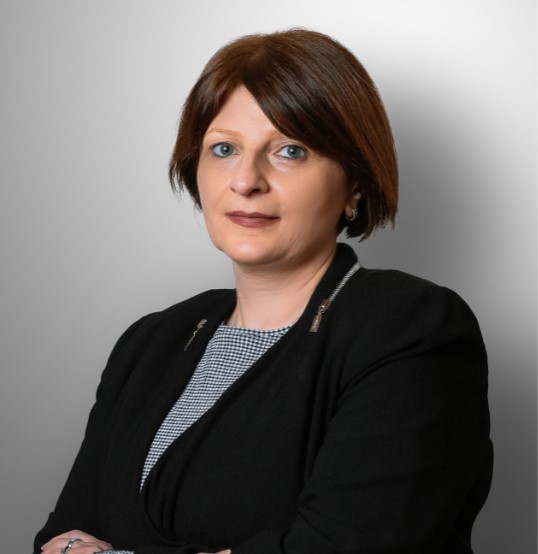Former United National Movement mayoral candidate for Tbilisi, Zaal Udumashvili, spoke about the chaotic construction situation in Tbilisi which has been ongoing for many years already. Mr Udumashvili emphasised that nothing has really changed in this regard under the Georgian Dream with one possible way out, albeit not the only one, in adopting a general development plan for the city.
Zaal Udumashvili also underscored the high velocity of ongoing construction in Tbilisi and added that selling the construction intensity coefficient still vigorously continues. Mr Udumashvili stated: “GEL 1,900,000 was paid to the Tbilisi budget from the selling of construction coefficients in 2013 whilst the estimated amount of money which the budget is supposed to receive from selling coefficients in 2018 is GEL 19 million.”
FactCheck took interest in the accuracy of the statement.
The so-called K2 construction intensity coefficient is the ratio of the overall area of the floors of a building on a given plot of land to the overall area of the plot. The fee for increasing the construction intensity coefficient has been imposed since 2007. On 13 April 2007, a change was made to Article 5 of the Law of Georgia on Local Fees with the fees for issuing special (zonal) agreements added. This amendment stipulated that a developer was able to pay the fee in order to increase the number of floors of a building under construction on the basis of a respective zonal agreement.
In accordance with a Tbilisi City Council ordinance issued on 12 December 2014, fee rate for special (zonal) agreements upon the territory of the Municipality of Tbilisi as well as rules for their payment were approved.
The aforementioned ordinance stipulates the calculation of the fee rate using the following formula:
X=L/k2(k21-k2)S
Source: Tbilisi City Hall
As illustrated by the table, the fee for increasing the K2 coefficient (the fee for issuing special zonal agreements) has been on the rise from 2013 with the actual income received from the fee exceeding the planned amount in the last years. In 2013, the total amount of fees for increasing the K2 coefficient reached GEL 1,929,000 whilst GEL 19 million will be paid to the Tbilisi City budget from the fees based on the draft for 2018.
The former Mayor of Tbilisi, Davit Narmania, thought that the selling of K2 construction intensity coefficients was a flawed practice introduced by the United National Movement. However, under his tenure as mayor, 1,037 agreement were issued over a period of two years with the number of issued agreements reaching 1,948 between 2009-2014. Therefore, under the United National Movement’s rule (from 2009 to August 2014), 336 permits were issued by the Municipality of Tbilisi for the purposes of increasing the K2 coefficient whilst an average of 518 permits were issued from August 2014 to August 2016. As a result, the “flawed practice” was continued even more actively under the Georgian Dream (see article).
Of additional note is that 39,776 construction permits were issued in Tbilisi between 2006-2017 comprising a total area of 36,234,214 square metres. In the last years; more precisely, in 2015-2017, construction permits were issued for the construction of residential premises amounting to 7,303,568 square metres in area.
Conclusion
The K2 construction intensity coefficient fee (fee for issuing special zonal agreements) was imposed in 2007 which means that each developer is able to increase the number of floors in a building under construction by paying the designated fee and based on respective zonal agreements.
The K2 construction intensity coefficient fee (the fee for issuing special zonal agreements) added GEL 1,929,000 to the Tbilisi city budget with GEL 10 million estimated to be paid to the budget in 2018.
Undoubtedly, the growth of income for the municipal budget is a welcoming fact. It is also obvious that the construction business contributes significantly to Georgia’s economic growth. However,the practise of adding floors in the process of building construction needs to be regulated by appropriate means.
In spite of the factual innaccuracy in regard to the figure regarding 2018 but taking the full context of the statement into consideration, Zaal Udumashvili’s statement is MOSTLY TRUE.
- In this formula X is the fee rate
- L is the normative price for one square metre at the time of concluding the special (zonal) agreement)
- K21 is the construction intensity coefficient which is given to a land plot on the basis of a special (zonal) agreement
- k2 is the construction intensity coefficient of a land plot determined by the usage of the territory and the construction regulation rules
- S is the area of the land plot
| Year | 2010 | 2011 | 2012 | 2013 | 2014 | 2015 | 2016 | 2017 | 2018 |
| Plan | 750 | 1,832 | 1,745 | 1,745 | 4,200 | 6,500 | 6,500 | 10,794 | 10,000 |
| Fact | 823.5 | 1,990 | 1,563 | 1,929 | 8,577 | 7,157 | 11,988 | - | - |
Tags:

![GEL 1,900 000 was paid to the budget from the selling of construction coefficients [the right to add to the number of floors of a building] in 2013 whilst GEL 19,000,000 is estimated for 2018](https://factcheck.ge/storage/defaults/default-seo.jpeg)





